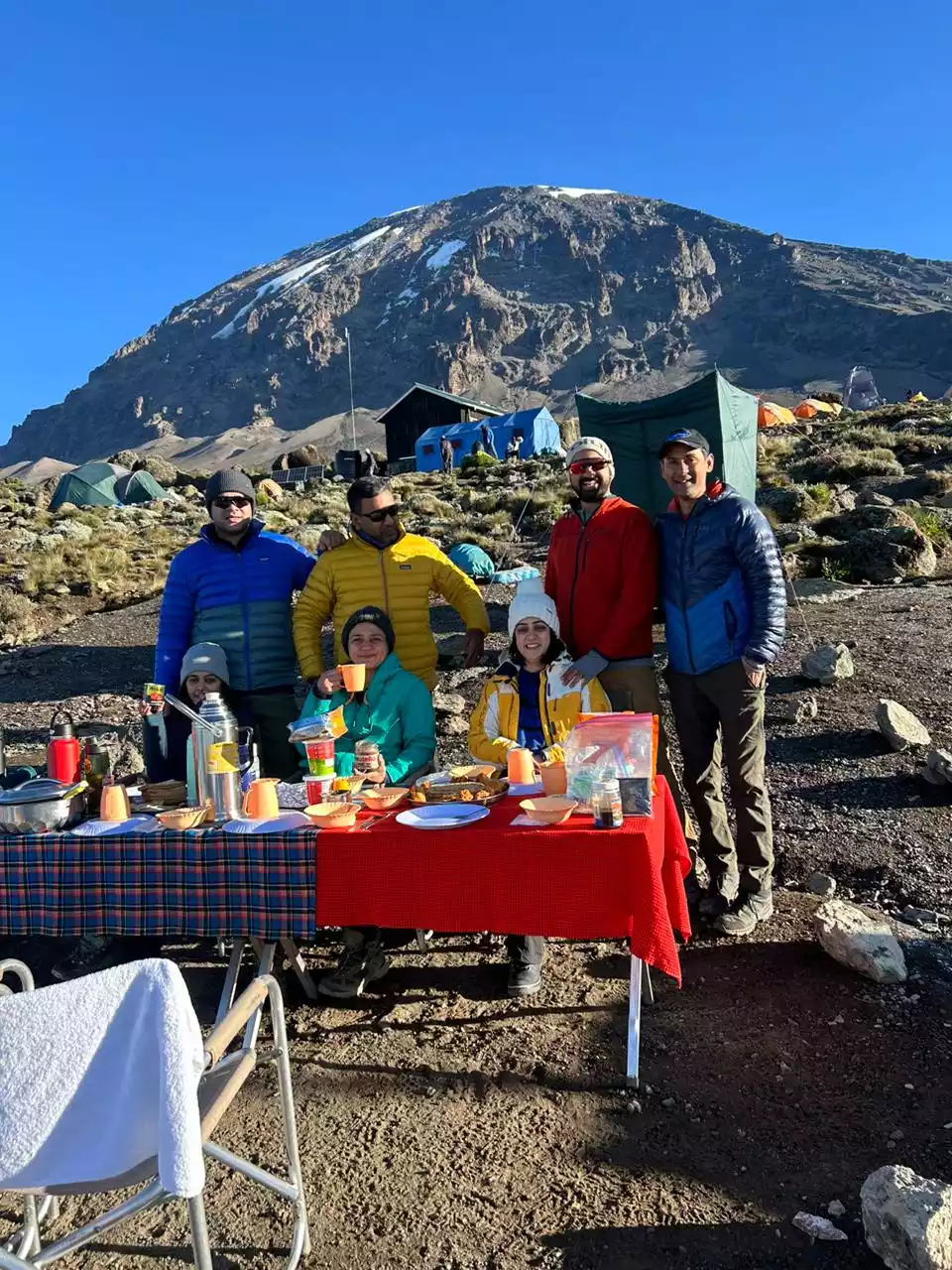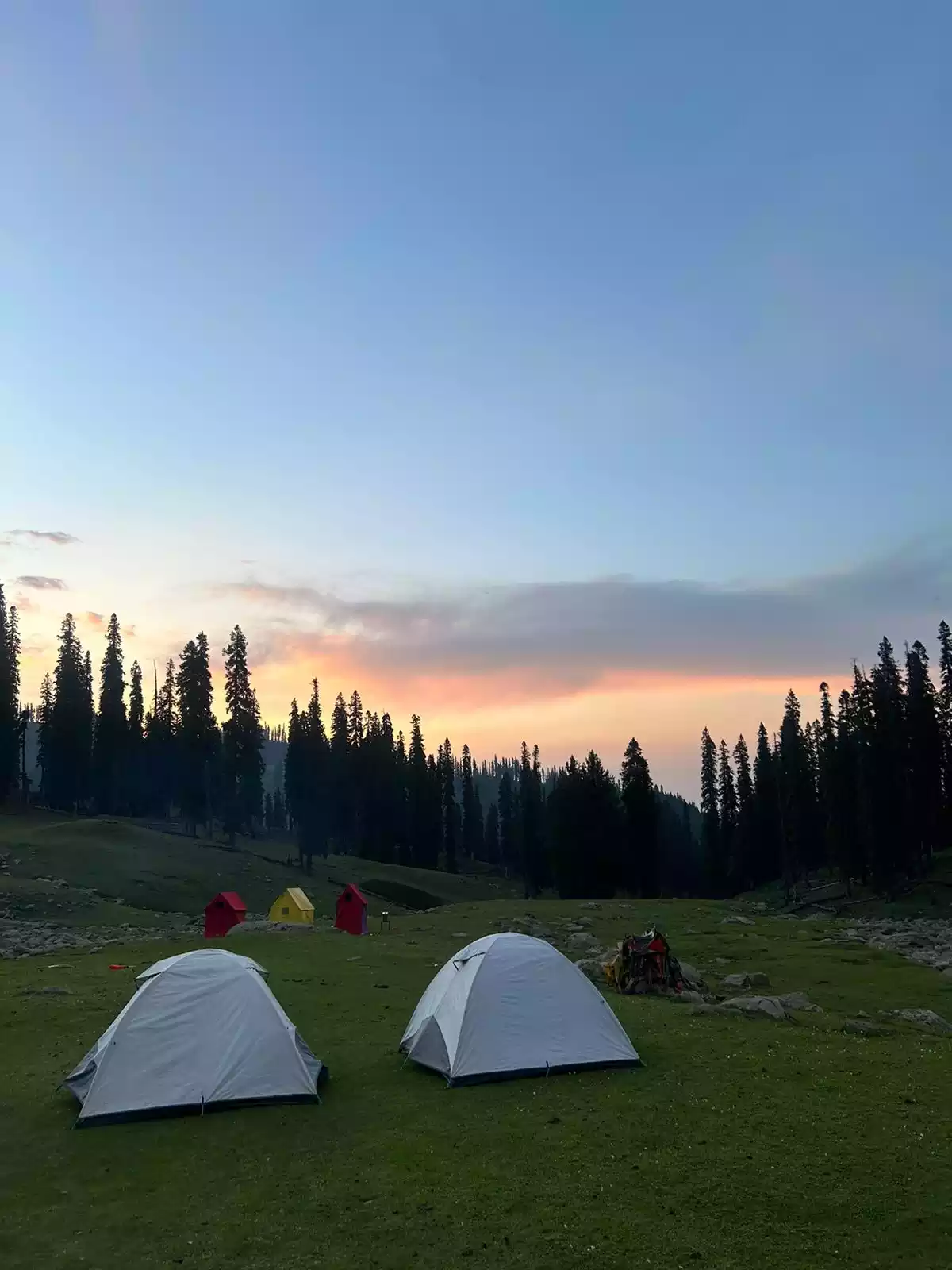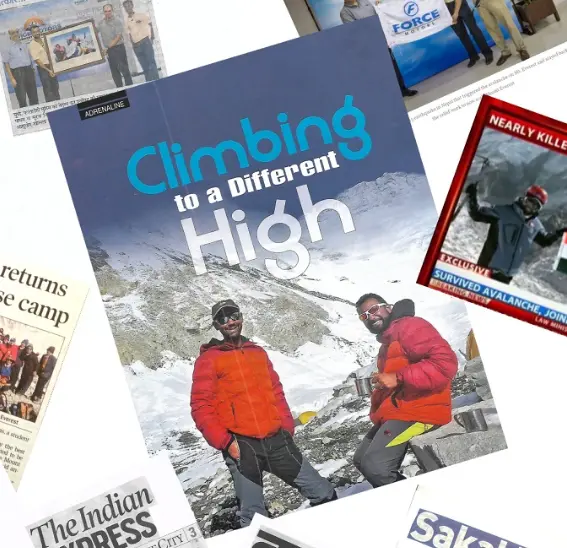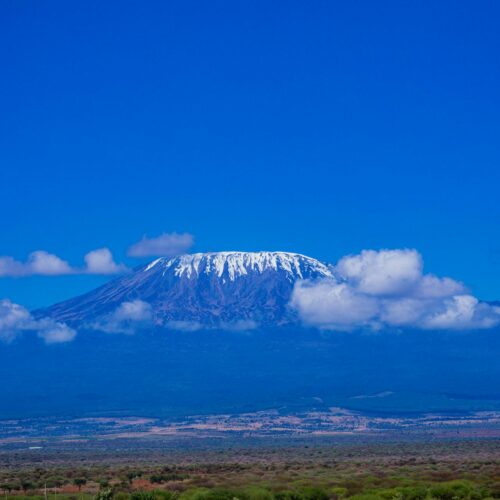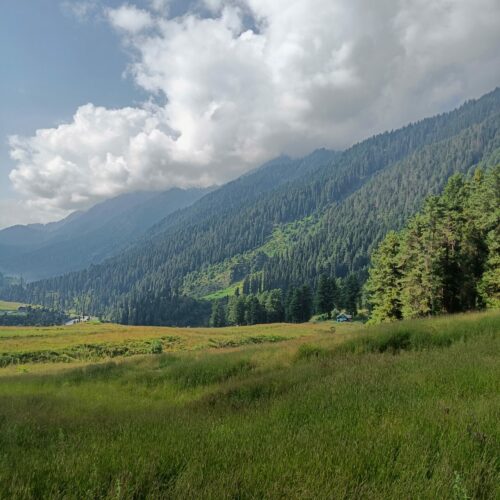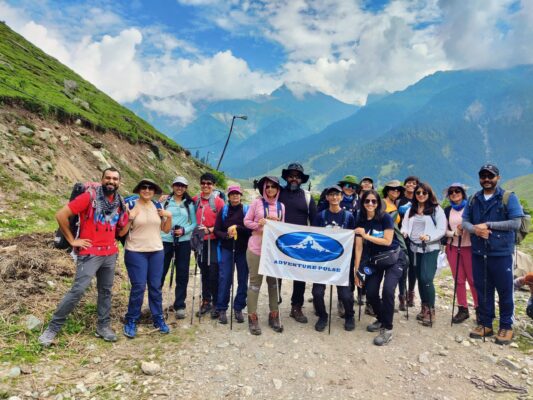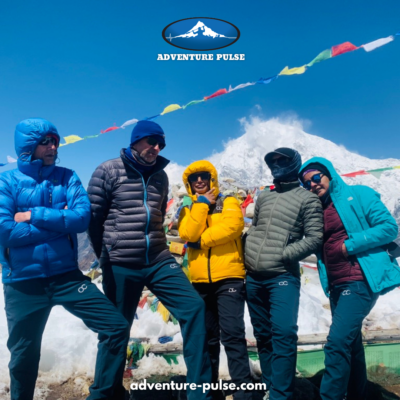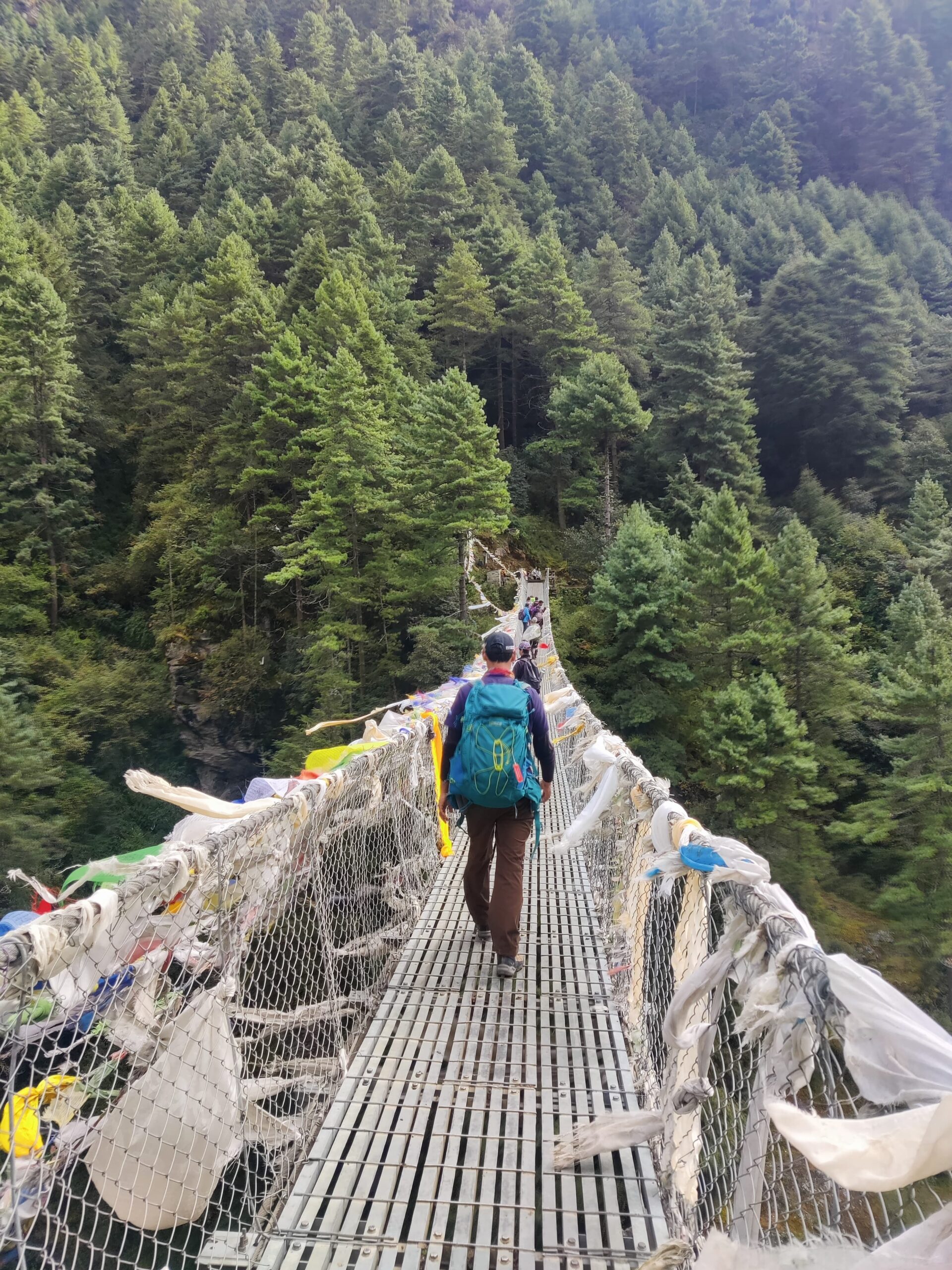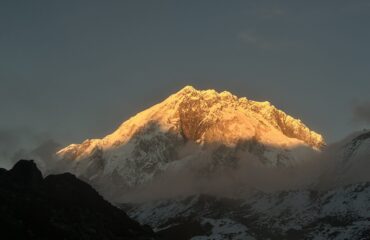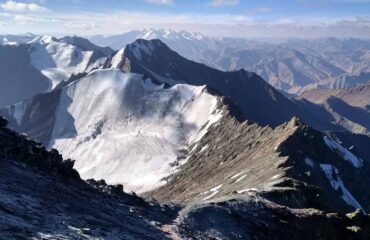
“Island Peak Expedition – The beginning of your mountaineering journey”
Climbing in Nepal
Nepal is one of the few countries in the world that offers endless opportunities for outdoor exploration. Blessed with an extensive network of trails and mountain bases, the country provides adventure at every turn. From the iconic Khumbu Valley to the serene regions of Pokhara and Syabrubesi, Nepal boasts a diverse range of trekking routes suitable for all levels of adventurers. Whether you’re an experienced mountaineer or a novice explorer, there’s a trail for everyone. Home to some of the world’s tallest peaks, including Mount Everest, Nepal also features accessible mountains like Island Peak and Lobuche. These 6000-meter peaks provide aspiring climbers with the perfect opportunity to transition from trekking to mountaineering, offering a thrilling introduction to the world of high-altitude climbing.
Island Peak Expedition Overview
Island Peak (Imja Tse) stands tall in the Sagarmatha National Park and is part of the Eastern Nepal Himalayas. First named Island Peak by the British Mount Everest Expedition in 1953, it earned this name because it resembles an island rising above the sea of ice when seen from Dingboche. In 1983, it was renamed Imja Tse, although the name Island Peak is still widely used. Geographically, it is an extension of the ridge from the southern end of Lhotse Shar and is situated in the famous Khumbu Valley, on the same trekking route as the Everest Base Camp trek. Trekking to Island Peak involves a detour at Dingboche, where climbers head towards Chukung before reaching the base camp.

Island Peak Expedition Facts
- Max Elevation: 6189 Meters (20,305 feet)
- Total Duration: 16 Days
- Trekking Days: 11 Days
- Training Days: 1 Day
- Climbing Days: 1 Day
- Buffer Days: 1 Day
Accessibility of Island Peak
Island Peak is easily accessible from Kathmandu. The journey begins with a drive to Ramechaap, followed by a flight to Lukla. The Island Peak route is shared with the Everest Base Camp trek until Dingboche. From here, climbers head towards Chukung and continue to the base camp for the final climb. After summiting, the descent follows the same route back to Lukla for the flight back to Ramechaap. The trek typically lasts for 16 to 17 days, although some climbers extend their trip to 21 days for acclimatization or to handle delays caused by weather conditions. Additionally, the weather at higher altitudes may affect the summit push, so many climbers opt for buffer days in their itinerary.
Island Peak Expedition – Itinerary Overview
Day 1: Arrival in Kathmandu, Nepal (Overnight at Hotel)
Day 2: Drive from Kathmandu to Ramechaap and fly to Lukla + trek to Phakding
Day 3: Trek from Phakding to Namche Bazaar
Day 4: Acclimatization hike and rest in Namche Bazaar
Day 5: Trek from Namche Bazaar to Debuche
Day 6: Trek from Debuche to Dingbuche
Day 7: Acclimatization hike and rest in Dingbuche
Day 8: Trek from Dingbuche to Chukung
Day 9: Trek from Chukung to Island Peak Base Camp
Day 10: Summit Island Peak and descend to Chukung
Day 11: Trek from Chukung to Debuche
Day 12: Trek from Debuche to Namche Bazaar
Day 13: Trek from Namche Bazaar to Lukla
Day 14: Fly from Lukla to Ramechaap and drive back to Kathmandu
Day 15: Buffer day for bad weather
Day 16: Fly out from Kathmandu
Best Season to Climb Island Peak
The best seasons to climb Island Peak are March to May and October to November, as these coincide with the peak trekking season for Everest Base Camp, offering favorable weather conditions. However, climbing in winter (December to February) is also becoming more popular, although the cold temperatures, high winds, and unstable weather make it more challenging. Therefore, climbers with less experience are recommended to attempt Island Peak during the prime seasons for better chances of a successful climb.
Temperatures and Expected Weather on Island Peak Expedition
In Kathmandu and Ramechaap, temperatures range from 20-25°C during the day. As climbers ascend to higher altitudes, the temperatures drop. In Namche Bazaar and higher regions, daytime temperatures hover around 8-10°C, and nights can become chilly with temperatures dropping to 5-8°C (sometimes as low as 2-4°C in strong winds).
At Island Peak Base Camp (5100 meters), daytime temperatures are between 0-8°C, and nighttime temperatures range from -5 to -10°C. Furthermore, in the High Camp (5600 meters), daytime temperatures drop to 0 to -10°C, while nights can reach -15°C. On the summit, climbers can expect daytime temperatures between -5 to -8°C and as low as -30°C at night due to high winds and wind chill. Thus, climbers should be prepared for extreme cold during their summit attempt.
Terrain
The trail leading to Island Peak offers a variety of terrain, starting with lush forests and gradually transitioning to more rocky and barren landscapes. From Lukla, the route follows the Dudh Kosi river and ascends gradually towards Namche Bazaar. From Namche to Dingboche, the climb becomes steeper, and as climbers approach the base camp, the terrain becomes more rugged and rocky. Finally, the last stretch involves navigating snowy surfaces and ice-covered sections, requiring the use of ropes and other climbing gear. Some sections may involve traversing steep, snowy slopes and crevasses, making the climb challenging but rewarding.
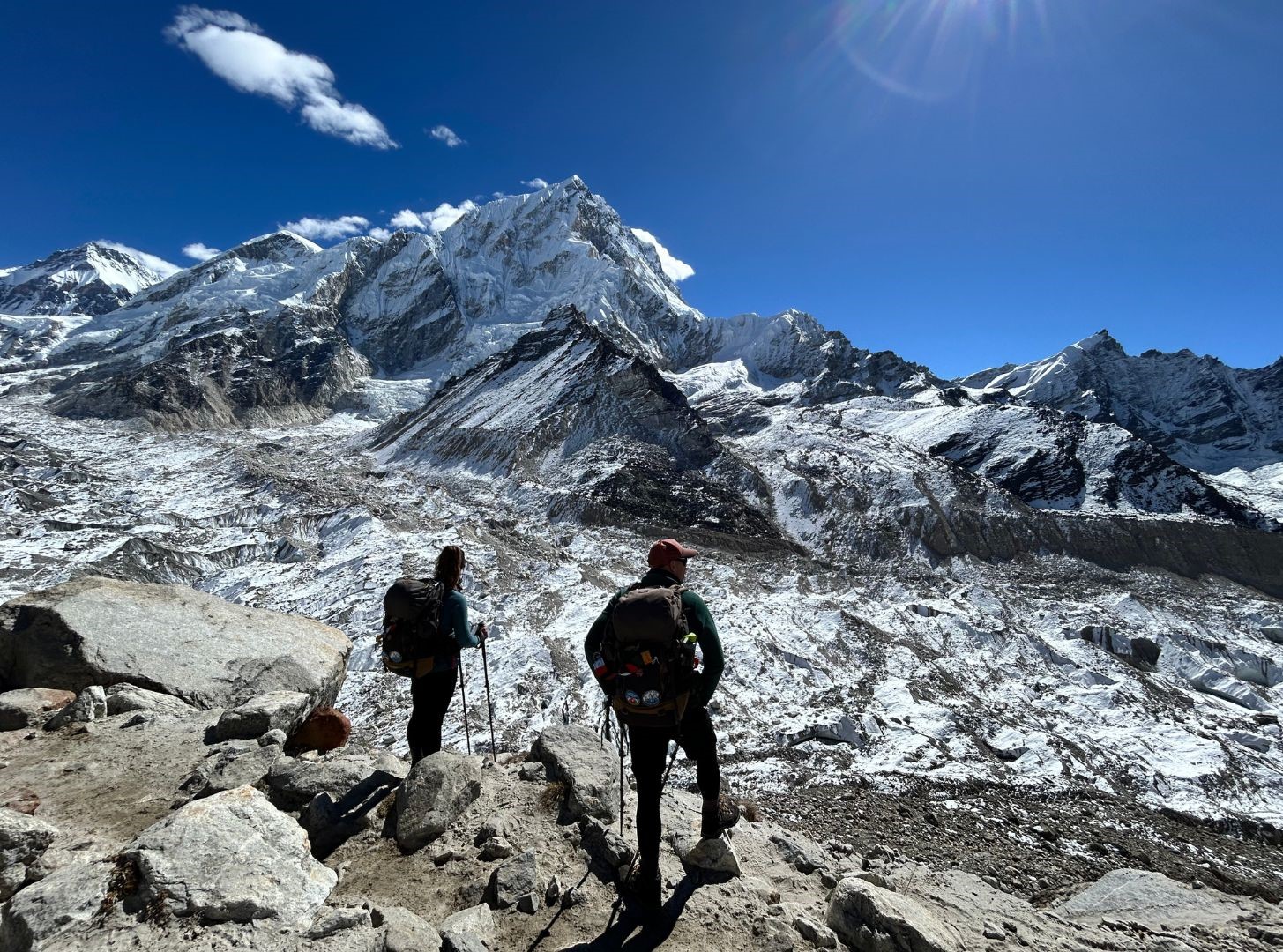
Communication Channels on the Climb
While there is internet access in most tea houses along the trekking route, it is often slow and unreliable due to weather conditions and limited bandwidth. Nevertheless, climbers can expect to pay anywhere from 500 to 1500 Nepali Rupees for a 24-hour internet connection. For better communication, many climbers buy a local SIM card in Thamel, which works in many areas of the trek. However, at the Island Peak Base Camp and summit, there is no network coverage, and communication becomes limited.
Can a First-Timer Attempt Island Peak?
Island Peak is often considered a good first-time climb for those with some trekking experience. Standing at 6189 meters, it is achievable for climbers who have trekked at higher altitudes, such as the Everest Base Camp trek. The route is well-trodden and offers gradual ascents that make it less challenging than many other peaks in the Himalayas. Climbers do not need advanced technical skills but must be comfortable using climbing gear, including ropes, crampons, and ice axes, especially near the summit.
Despite being less technical than other mountains, the climb is still physically demanding. Summit day can take 12-15 hours, requiring stamina and mental preparation for the long climb. Therefore, climbers must be able to handle the physical stress of altitude, fatigue, and extended hours of climbing.
Challenges on Island Peak Expedition
Climbers attempting Island Peak will face several challenges:
- Weather windows: Weather can change quickly, and high winds can delay or stop the summit attempt. Therefore, climbers need to monitor weather patterns and plan their summit push around good weather windows.
- Acclimatization: Acclimatization is essential to avoid Acute Mountain Sickness (AMS). Thus, climbers must follow a careful schedule with rest days to prevent AMS and ensure they are physically prepared for higher altitudes.
- Technical skills: The final climb requires basic mountaineering skills, such as using crampons, ice axes, and ropes. Climbers will need to be confident using these tools to navigate steeper, snow-covered sections.
- Fitness: Physical fitness is crucial for Island Peak. The ascent is long and demanding, especially summit day. Climbers need strong cardiovascular endurance and the ability to push through fatigue at high altitudes.
Technicalities Involved
Island Peak’s final climb requires basic technical skills, including roping up for certain sections with crevasses and using climbing tools like crampons and ice axes for snow and ice. Although the peak is not as technical as other Himalayan summits, climbers still need to be proficient in using these tools to ensure safety.
What Equipment is Needed?
Climbers should bring standard trekking gear, including clothing for high-altitude conditions, as well as specialized climbing equipment. This includes gaiters, crampons, micro-spikes, climbing helmets, ice axes, and ropes. A full list of gear will be provided by the climbing operator.
Level of Physical and Mental Fitness Needed
Despite being one of the most approachable peak for first time climbers, climbing Island Peak is challenging and definitely not for the faint-hearted. The climb requires you to be in excellent physical and mental state.
Climbers need to build good levels of endurance and stamina to be able to summit this peak. Good endurance will especially come in handy during the summit push as the journey starts in the night and goes all the way up to the next afternoon, ranging anywhere between 12 – 15 hours, depending on the weather and the pace of the group. Good cardio vascular fitness along with muscular strength will make your journey possible and comfortable.
Especially for first time climbers, climbing Island Peak can feel overwhelming. The transition from a trekker to a climber does not come easy and it is common for first timers to have a mental block. Not only the first timers, but also climbers with some experience can be mentally unprepared for the challenge. The high altitude, technical equipment, fatigue of the journey, rough terrain of the region, can all be factors that can overwhelm any individual and deter them from continuing the journey.
Prepping for Summit
During your expedition to Island Peak, you will stay in tea houses throughout the journey, except at the Base Camp. The Base Camp sits at 5100 meters. At the Base Camp, we spend an extra day acclimatizing and practicing with our climbing equipment. We introduce each climber to their climbing essentials, such as shoes, harnesses, crampons, micro spikes, carabiners, ropes, snow glasses, and helmets, teaching them how to use each item. We practice lining up, deciding the order of the rope line, coordinating with one another, and understanding each other’s pace. We address all queries on this day, along with the practice, which prepares climbers both physically and mentally for summit day.”
Chances of Fatality
The chances of fatality on Island Peak are low, but proper preparation is essential. The most significant risks are related to weather, altitude sickness, and poor decision-making. Therefore, climbers should follow the guidance of experienced guides and respect safety protocols throughout the expedition.
Accommodation during the Island Peak Expedition
Upon arrival in Kathmandu, you will spend your first day at a hotel in Thamel. From Day 2 onwards we enter the Khumbu valley, and trek through the Sagarmatha National Park. Throughout the Trek, you’ll stay in tea houses, mountain lodges built for trekkers. These tea houses vary in size and are operated by local families who migrate to higher altitudes during trekking season. Rooms typically feature twin beds with mattresses, pillows, and blankets, and access to common bathrooms.
The tea houses also have fully functional kitchens that prepare fresh meals. The dining areas are equipped with tables, chairs, and a central Bukhari to keep you warm and cozy. The hospitality of the Nepali people enhances the entire trekking experience, making it unforgettable. At the Base Camp of the Peak, we will be staying in a camping set up. With sleeping tents, toilet tents and the dining and kitchen tent, we set up camp for our stay before hitting the summit.

Meals Served
Tea houses along the trekking route provide a variety of meals, including dal bhat (a traditional Nepali dish), noodles, soups, and even international dishes like pizza and burgers. These meals are designed to provide the energy needed for the day’s trekking.
Island Peak Climbing Expedition with Adventure Pulse
Climbing with Adventure Pulse means you will experience a well-organized and safe journey. Our team of experienced and certified guides and porters will support you every step of the way. We prioritize your safety, comfort, and overall experience, ensuring that you receive all the necessary guidance and support throughout your climb.
Adventure Pulse specializes in providing top-notch climbing equipment and expert guidance, ensuring you have the right tools and knowledge to tackle the challenges of Island Peak. Our skilled guides, some of whom have summited Mount Everest multiple times, are well-versed in high-altitude conditions. They will teach you the technical aspects of climbing, the acclimatization process, and how to properly use gear like crampons, ice axes, and ropes, all while prioritizing your safety.

